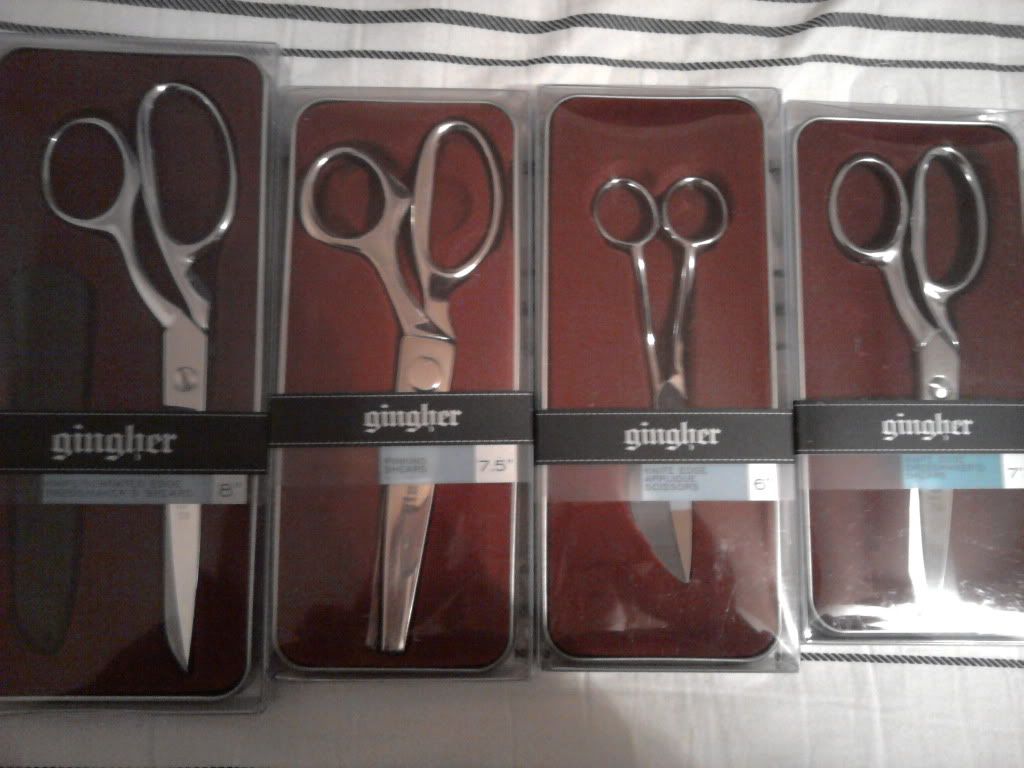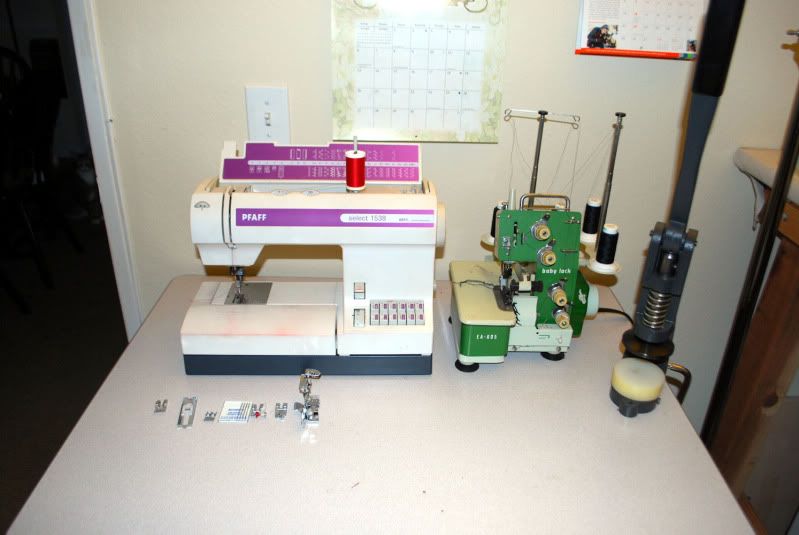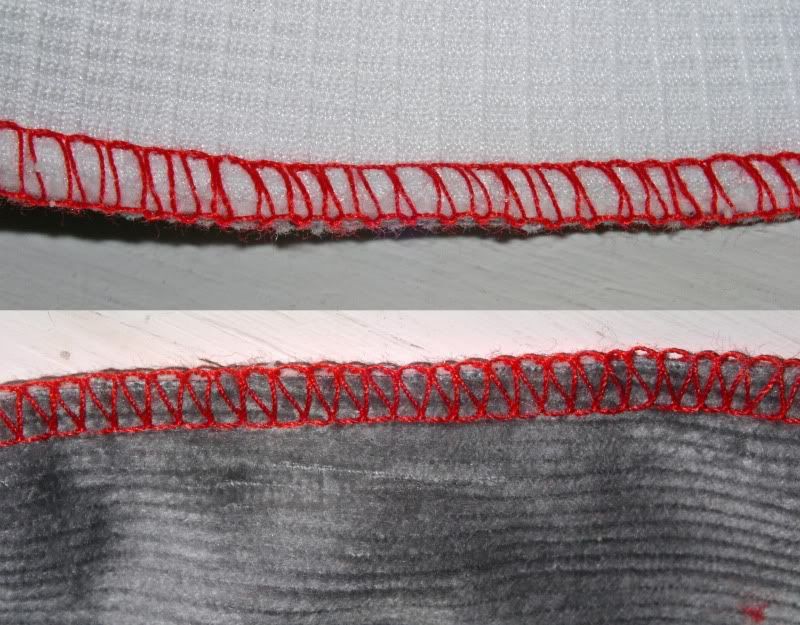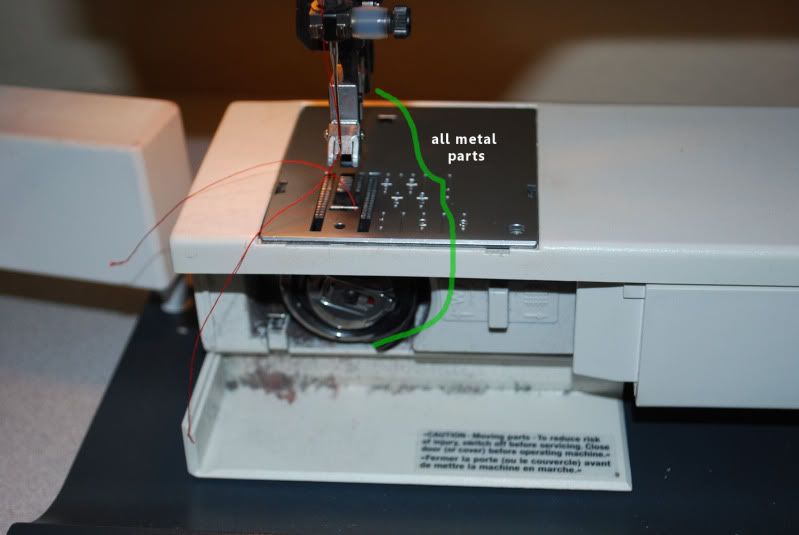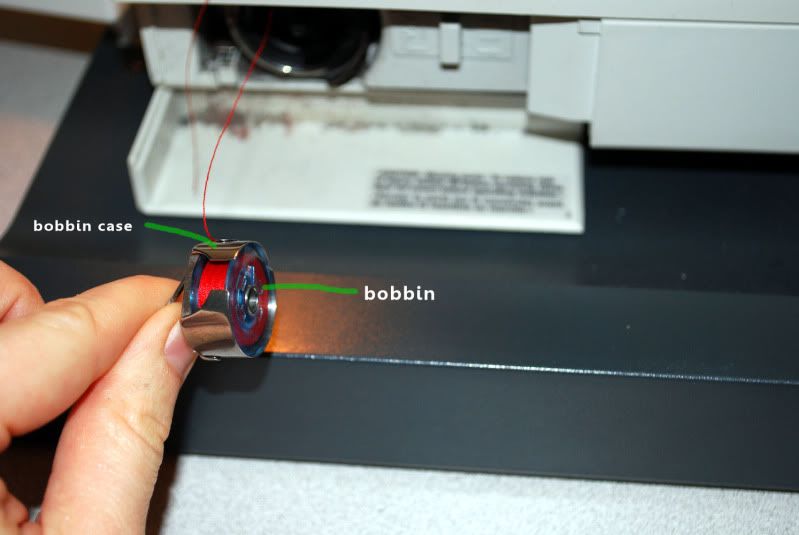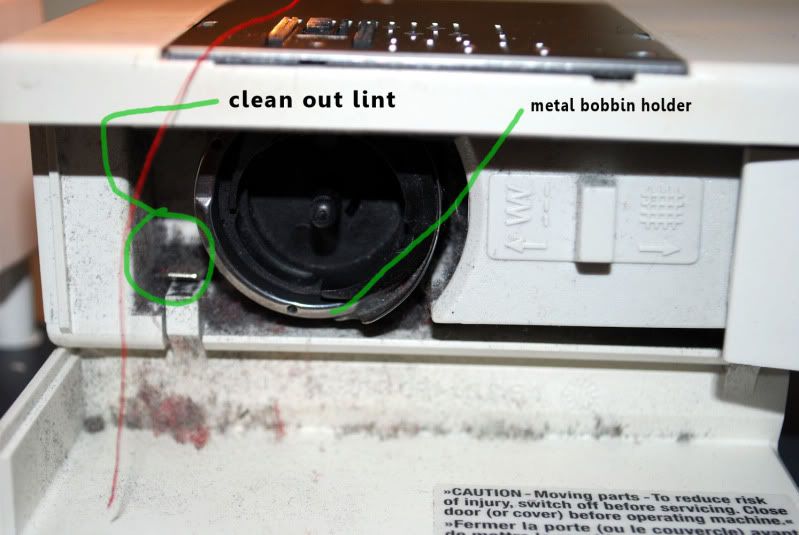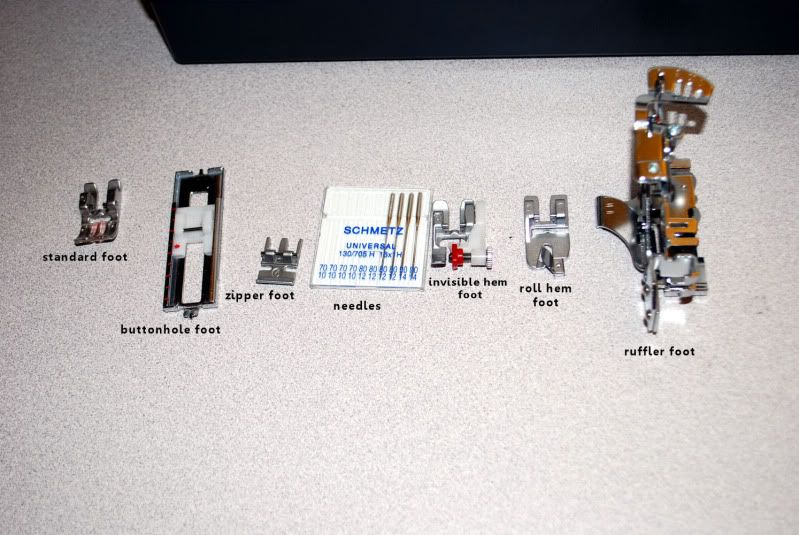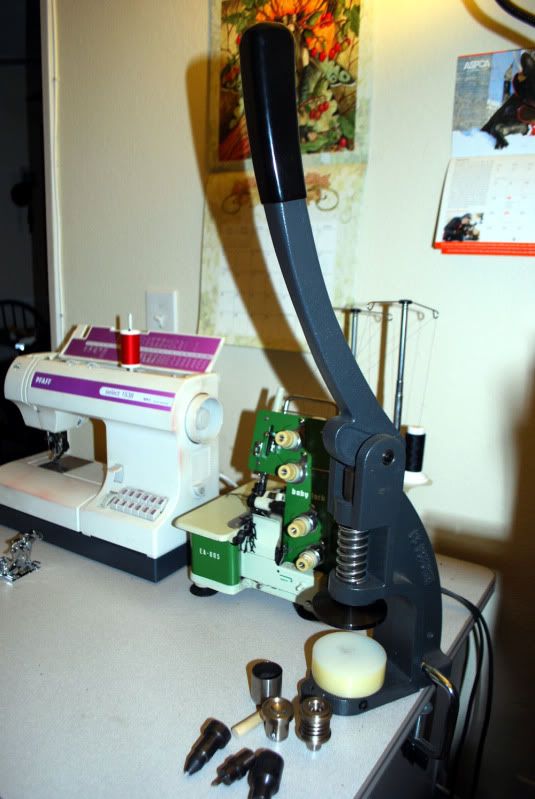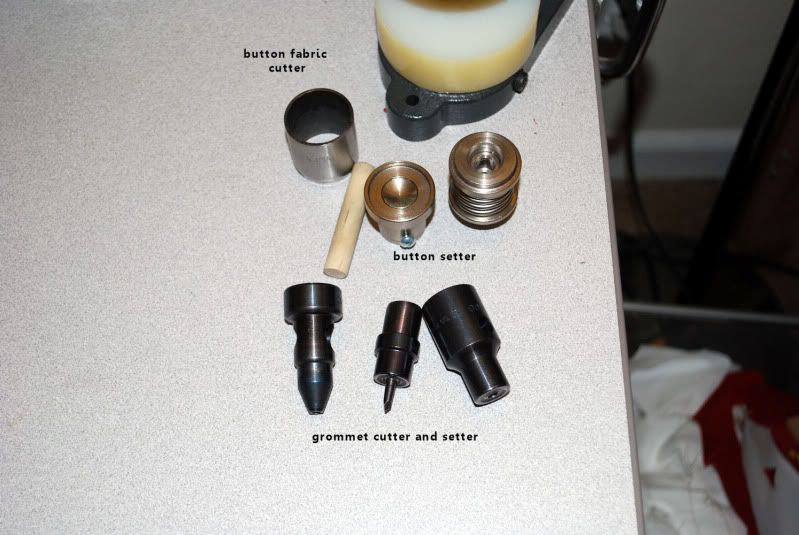Scissors/Dress Making Shears
Scissors, or more correctly dressmaker shears, feature offset handles that allow you to run the bottom blade along the cutting surface. This keeps more of your hand above the fabric and disturbs the fabric less.
View attachment 75224
Scissors are sold in right and left hand models and by blade length. Long blades great for long straight cuts while shorter blades are good for curved lines and small cuts. A good overall size is 8".
If money is no object, the best scissors you can buy are Gingher. These are heavy, solid metal scissors, beautifully shined with the Gingher name etched on outside of the blade. The blades hold their edge, however they must be professionally sharpened. I know of one instance where a pair of Ginghers were packed in checked luggage and “disappeared” between home and the final destination. A pair will cost you about the same as a Dremel.
The most common sewing scissors now are the steel blade with plastic handle ones. Some brands include Fiskars and Dritz. These are much lighter than the solid metal ones; you will appreciate that if you are cutting out a large amount of fabric. These scissors don’t hold their edge as well, however you can sharpen them yourself. You can buy a sharpener or some scissors are sold as a set with a sharpener.
Caring for Your Scissors
In the old days, if you picked up someone’s sewing scissors and tried to use them for something other than fabric, the scissors’ owner probably emitted a shriek that rattled the glassware. Somewhere in the following tirade would be the line “Those are my GOOD scissors!” That was because all scissors had to be professionally sharpened. Finding someone who could sharpen scissors was a challenge; to some extent it still is. Some professional sharpeners will schedule visits at local sewing stores once every six months or so.
Those of you who use other bladed tools know that the sharper the blade, the easier, faster, and safer it is to do the work. Same thing with scissors. Dull blades tend to gnaw on the fabric and will raise blisters on your hands.
Save your sewing scissors for sewing only. The sharpeners will help keep the blades sharp but won’t work as well to bring a blade back from extreme dullness. Some people take this to the extreme and will cut paper patterns out with cheap scissors so their sewing scissors are truly only cutting fabric.
You can do just about everything with your big scissors; however you may want a small pair for small jobs like trimming loose threads. These in the attached thumbnail are my favorites. They are actually medical scissors and you can find them at flea markets, swap meets, etc.
One set of specialized scissors are pinking shears. These cut and leave a zigzag, or pinked edge. These must be professionally sharpened. Some people like to use pinking shears on fabrics that fray. Pinking shears are not an absolute necessity, unless you are doing a historical costume where pinked edges were a common seam finish.
You may also see electric scissors in the stores. They sound like a good idea, but I don’t know anyone who uses them regularly. I used a pair back in the 60s – they had one speed – fast – and lost their edge extremely quickly and gnawed, rather than cut, fabric.


